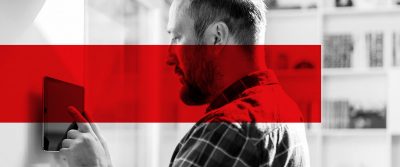 How can utilities improve customer satisfaction by improving the user experience of their call centre software?
How can utilities improve customer satisfaction by improving the user experience of their call centre software?
Can you believe it was in 2007 that Apple launched the iPhone? Now 11 years on the iPhone has triggered a technological revolution and brought truly mobile computing to the mass market.
Sure, there were high-end smartphones around before the iPhone but the iPhone’s ease of use and pure enjoyment factor changed the game. Smartphones like the iPhone and its Android competitors are everywhere now, and used by everyone from toddlers to the elderly.
So what does this mean for enterprise billing and customer care software?
Firstly, most call centre workers are millennials1 and therefore digital natives, spending most of their leisure time using smartphones and social media. But when they sit at their desk in the call centre, the legacy systems they use make them feel like they are travelling 20 years back in time. And they don’t want it to be that way. Their expectation is that the technology they use at work should provide a user experience that’s as good as the technology they use outside of work.
Secondly, call centres are under growing pressure to take more calls but somehow reduce average handle time and increase customer satisfaction. The key to achieving these goals is to improve the user experience of the call centre software.
Thirdly, technological change and consumer expectations are driving a transformation in the products and services being offered by energy retailers. In days gone by, energy retailers just sold electricity and gas. Now there are new products and services like solar panels, batteries, charging points for electric vehicles, and energy-efficient light globes.
Finally, customers are becoming more accustomed to self-service through websites and mobile phone applications. The classic example is internet banking. When was the last time you went into a bank branch? This article won’t be covering self-service, though – that’s a subject for another time.
Hansen’s response to these customer challenges is to modernise its legacy billing and customer care software, from both a technology and a user experience viewpoint.
The key technology change is a move from Windows programs that are installed on each call centre agent’s computer to modern browser-based web applications that use responsive design. This allows utility companies to save money by:
- Moving agents’ computers from Windows to less expensive operating systems such as Linux
- Avoiding the need to push software updates to agents’ computers each time a new software release is installed.
And responsive design means that the software can be used effectively across a range of devices, from computers with multiple monitors down to tablets and smartphones. In a call centre setting, this means that an agent can access the system using the computer on their desk, while a team leader or manager can roam the floor and use the same system on a tablet.
As for the nitty gritty of the user interfaces in the applications, we’re modernising them in a number of ways:
- dashboard-style designs that bring together key details into a single screen
- streamlining previously cumbersome taskflows, reducing the number of screens and steps needed to complete tasks,
- interactive charts where agents can click-through from monthly usage to daily and even hourly usage, and
- fresh new visual design.
But just as important as what’s being done is how it’s being done. Part of the process is observing call centre agents using the system so we can learn what works for the users and what needs to be improved. When a utility company is taking hundreds or thousands of calls a day, every second of time removed from a task equals a real cost saving. Direct observation of call centre agents means improvement opportunities are found faster and implemented sooner.
[1] In 2009, an Australian Services Union survey found that 50% of call centre workers are aged below 35, which in 2017 would classify them as millennials. When you combine high turnover in call centres with growing numbers of young people entering the workforce, it’s reasonable to expect that the number of millennials in Australian call centres would now be above 50% if this survey were to be repeated.
By Stewart Walker – UX Specialist for Hansen CIS.